A quick way to kill interest in a contemporary painting is to call it Abstract Expressionist, even neo-AbEx or in the tradition. As a tradition, it played itself out more than half a century ago. From dominant it fell to irretrievably historical, rooted in post-World War II New York with variants in other places (Paris, San Francisco, Seattle), all of which are also signed, sealed and delivered into the past.
Before AbEx, abstraction was reductive. ApbEx gave flesh to those bones. Exuberant, intuitive and of-the-moment, it allowed the hand and arm to speak for mind and represent matter. Pop pushed the movement aside by making the passions of the second generation look hysterical, ego-driven and (worst of all) contrived. Pop was cool and fun-loving. AbEx was neither. Its pioneers held their own, but artists interested in carrying it forward risk being accused of playing “torch songs on dead batteries,” as David Thomson unfairly wrote about Chet Baker.
The dead-battery-torch-song theory has only one flaw: It isn’t true. AbEx’s powerful progeny are everywhere, doing their bit for overall fields and the pleasures of push/pull, but the ones who rise to prominence refer to their family tree at their peril.
Here are a few:
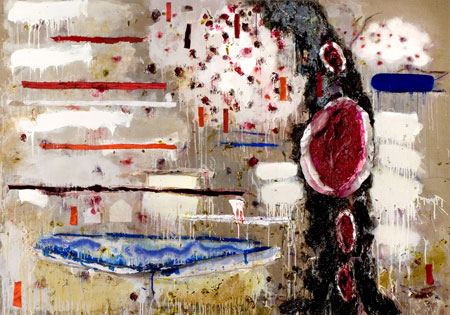 Susan Rothenberg (Image via)
Susan Rothenberg (Image via)
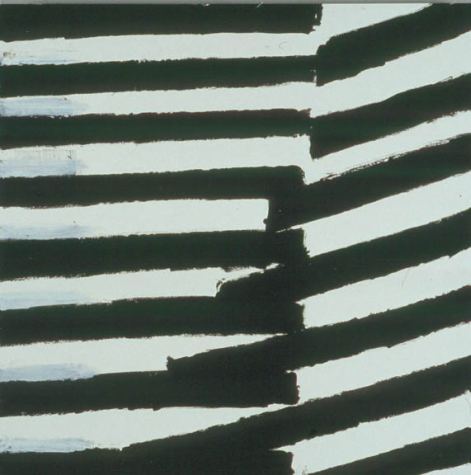
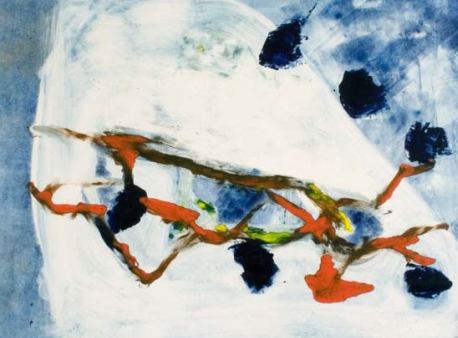 Mark Takamichi Miller (At Howard House)
Mark Takamichi Miller (At Howard House)
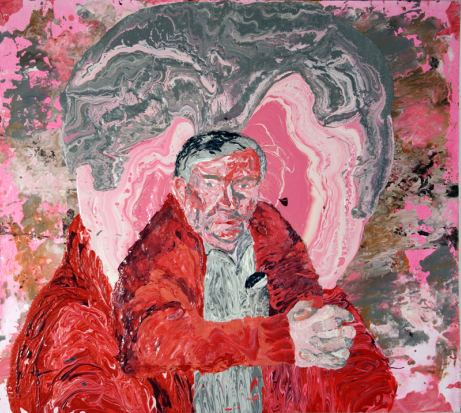



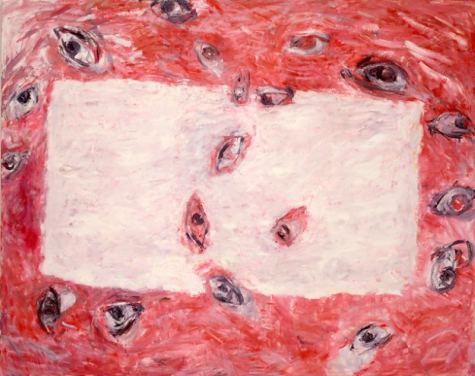
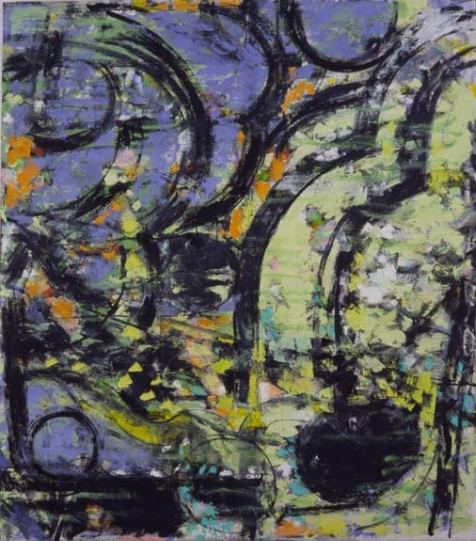

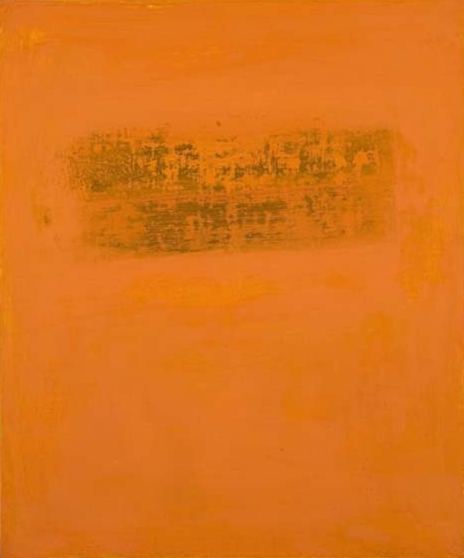
Good post, interesting. I’m particularly drawn to the orange painting by Denzil Hurley; I clicked on the link to find he’s from the West Indies (which intrigues me even more, since I’m Caribbean-based).
I agree with your statement: “A quick way to kill interest in a contemporary painting is to call it Abstract Expressionist…” I often tire of my work being labeled as such but if it helps people identify with it, then so be it.
You are so right about this. I love every one of these artists. Thank you.
I always wish with posts like these that you’d elaborate on your theme. Where’s the progress, if there’s any? Your writing in the PI was more complete. Your posts are fragments, the beginnings of ideas. Is this the future, all fragments, no fullness? (Watch the typos. You have ApEx in places, instead of AbEx. I know. No editor.)
Nice to hear something possitive about Abstract Expressionism. Too often overlooked these days. The term often an instant turnoff for people, which is unfortunate as you point out. The problem I find is what do you call the art? It’s safe to say I do pop art.. it’s not all that safe to say I do abstract art, and impossible to say I do abstract expressionist art. Alot of the work that has the AbExp tendancies really doesn’t fit the traditional definition anyway.
Hi James. I think the traditional definition has always been fluid.
There is some really nice work. I’m sure that Abex will not go away, even if it is not cutting edge any more.
Nice to see this article. My uncle was among the original group in New York. Harold Shapinsky. http://en.wikipedia.org/wiki/Harold_Shapinsky Quite an interesting man. There was a story about him in the New Yorker, Shapinsky’s Karma. http://www.nytimes.com/books/first/w/weschler-city.html Great read about an unusual person, situation, and a deeper dive into Abstract Expressionism.
Re: James/ Ms. Hackett
The traditional definition of Abstract Expressionism may be thought of as relatively fluid and open ended. However disparate their formal inclinations, both critics and artists associated with the general school, held in common a regard for the interior content of painting, whether it be spiritual or bibliographic or of another nature. Many “abstractions” today differ in this regard.
If you haven’t already you might want to check out Bob Nikas’ new book, Painting Abstraction. Though hardly poetic the beginning introduction does a good job of offering several definitions of abstraction today, including but hardly limited to conceptual and post studio influenced approaches.
Not sure if anyone will find this germane or usefull but I thought I’d give it a shot.
Also, isn’t it funny that someone like Hodgekin sells for oodles while a predesessor like John Schueler can be purchased on lunch money?
A parallel tendency may be observed in contemporary music, with all the attempts to dismiss dodecaphony, serialism — and high modernism in general — not only as forms of expression which have failed to survive the natural selection process (one might say), but which are also somehow morally bad because they “turn audiences off.” They are not inherently “popular” in their approach. And yet all of these forms and styles are alive and well. Schoenberg and Kandinsky, Webern and Franz Kline, may end up having the last laugh.
Tired tropes persist decades past their sell-by date, even assuming they were ever fresh. In the early music world, it’s the “historically-informed performances are dry, rigid, and poorly played” (usually so as to build to the faux-surprising “But not this time!” turn in the review or essay). Anyone who actually follows early music knows that this is simply not true: early-music specialists are devoted to fresh, communicative, virtuosic, and improvisatory performance.
Or on a non-art subject, compare to the “New York is terrifyingly dangerous!” trope. People are very slow to change their fixed ideas.
Thanks Harold, AbExp is a fairly loosely defined term. Just googling you come across a dozen or more definitions. When I think of it in a purist sense, it is in terms of some of the new York school artists that have stated that they attempted to paint in a wholly interior manner based upon pure emotion and intuition, particularly those that went as far as to state that if they ever found any recognizable representational form or object in their work, they would scribble it out and work over it.
The more open definitions among other things don’t necessarily bar representational form, or more conscious and calculated structure to the painting, but still rely on a primarily inner intuitive or emotive process.
My view on it regardless of how it’s defined is that it has as infinite potential as there are artists to create it. Technically you could say this about any genre, but in practical terms, I tend to see more diversity in AbExp than impressionism, cubism and many other now historic movements. Because if this, I don’t think it will ever truely be a dated movement although the 40-50’s will always be considered the golden era. However, in addition to the problem of it being out of vogue to some degree, I also see a difficulty in that it’s much harder to quantify quality in a work or artist because by definition it is devoid of many agreed upon standards and elements since we are not dealing with anything specific for external comparison.
Who’s to say a work is or isn’t good/bad. It could be flawlessly created the way the artist intended. So quality is determined more by agreed upon impact or vague concensus perception, or traditional rules of geometry, balance, color theory, and aesthetic.